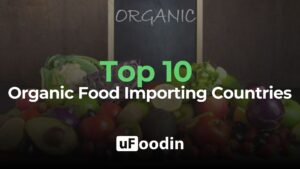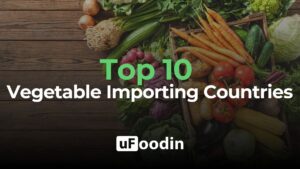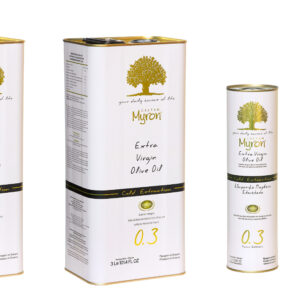
Top 10 Coffee Producing Countries

Top 10 Coffee Producing Countries
The global coffee market is experiencing significant growth, driven by increasing consumer demand and evolving consumption patterns. In 2024, the market size is estimated at USD 132.13 billion and is projected to reach USD 166.39 billion by 2029, growing at a CAGR of 4.72% during the forecast period.
Coffee is one of the world’s most popular beverages, with over 400 billion cups consumed annually.
The industry is characterized by a diverse range of products, including roasted, instant, and ready-to-drink coffees, catering to varying consumer preferences across different regions.
The top coffee-producing countries, such as Brazil, Vietnam, and Colombia, play a crucial role in meeting global demand. However, the industry faces challenges, including climate change, which threatens coffee production with unpredictable weather patterns and diminishing yields.
Additionally, market saturation and changing consumer preferences compel businesses to remain agile and adapt their offerings to meet evolving demands.
In recent years, there has been a notable shift towards sustainability and ethical sourcing within the coffee industry. Consumers are increasingly seeking products that are environmentally friendly and socially responsible, prompting producers to adopt eco-friendly practices and support fair trade initiatives.
Technological advancements, such as blockchain and AI, are also playing a crucial role in improving efficiency, quality, and transparency in the coffee industry.
Overall, while the coffee industry is poised for continued expansion, addressing environmental concerns, embracing technological innovations, and adapting to changing consumer preferences will be crucial for its long-term sustainability and success.

1. Brazil
Annual Production: 3.2 million metric tons
Why It Stands Out: Brazil has been the world’s largest coffee producer for over 150 years, known for its high-quality Arabica and Robusta beans.
Key Insights: Brazil’s diverse microclimates allow for year-round harvesting, contributing to its unmatched dominance in the coffee industry. Coffee cultivation here spans over 2.2 million hectares, making it a cornerstone of the nation’s economy.
2. Vietnam
Annual Production: 1.8 million metric tons
Why It Stands Out: Vietnam is the largest producer of Robusta coffee, a key ingredient in instant coffee blends.
Key Insights: The country’s rapid rise in production since the 1990s is a testament to its focus on efficient farming methods, supported by government initiatives.
3. Colombia
Annual Production: 810,000 metric tons
Why It Stands Out: Colombia is synonymous with premium Arabica coffee, prized for its smooth, mild flavor and distinct aroma.
Key Insights: Coffee accounts for approximately 10% of Colombia’s agricultural GDP, with over 500,000 families involved in its cultivation.
4. Indonesia
Annual Production: 660,000 metric tons
Why It Stands Out: Indonesia’s volcanic soil produces unique coffee varieties like Sumatra, Sulawesi, and Java, known for their earthy and rich flavors.
Key Insights: Indonesia is a major exporter of specialty coffee, particularly to premium markets in Europe and North America.
5. Ethiopia
Annual Production: 450,000 metric tons
Why It Stands Out: Known as the birthplace of coffee, Ethiopia produces a wide variety of Arabica beans, celebrated for their floral and fruity profiles.
Key Insights: Coffee accounts for 30% of Ethiopia’s export revenue, making it a critical part of the nation’s economy and culture.
6. Honduras
Annual Production: 390,000 metric tons
Why It Stands Out: Honduras has become a leading exporter of high-quality Arabica coffee, known for its bright acidity and balanced flavor.
Key Insights: The coffee industry supports over 120,000 families in Honduras, reflecting its socio-economic importance.
7. India
Annual Production: 320,000 metric tons
Why It Stands Out: India produces both Arabica and Robusta coffee, often grown in the shade alongside spices like cardamom and pepper, which enhance its unique flavor profile.
Key Insights: Indian coffee is predominantly exported, with 80% of production shipped to Europe and Russia.
8. Uganda
Annual Production: 270,000 metric tons
Why It Stands Out: Uganda is Africa’s second-largest coffee producer, focusing on Robusta beans, which thrive in its tropical climate.
Key Insights: Coffee represents 20% of Uganda’s export earnings, providing a vital income source for rural farmers.
9. Mexico
Annual Production: 230,000 metric tons
Why It Stands Out: Mexico is known for its organic coffee production, particularly in regions like Chiapas and Oaxaca, which offer ideal growing conditions.
Key Insights: The country’s focus on sustainable and organic practices has boosted its reputation in premium markets.
10. Peru
Annual Production: 200,000 metric tons
Why It Stands Out: Peru specializes in organic and fair-trade coffee, catering to the growing demand for ethically sourced beans.
Key Insights: Coffee cultivation in Peru is largely small-scale, with over 220,000 smallholder farmers contributing to its exports.
Major Trends in the Coffee Industry
1. Demand for Specialty Coffee
Specialty coffee is experiencing rapid growth, with global sales expected to increase at a CAGR of 8.2% through 2030. Consumers are increasingly seeking single-origin, fair-trade, and sustainably grown coffee.
2. Sustainability and Ethical Sourcing
Eco-conscious consumers are driving demand for sustainably sourced coffee. Producers are adopting carbon-neutral practices, reducing water usage, and supporting biodiversity.
3. Rise of Coffee Alternatives
Products like cold brew, nitro coffee, and coffee-infused functional beverages are reshaping the industry, catering to younger, health-conscious consumers.
4. Technological Advancements
Farmers are leveraging technologies such as precision agriculture and blockchain to improve yield, enhance traceability, and build trust with consumers.
5. Growth in Asia-Pacific
The Asia-Pacific region is emerging as a major market for coffee, with rising disposable incomes and urbanization boosting consumption, particularly in China, South Korea, and India.
6. Increasing Role of E-Commerce
Online sales of coffee are growing rapidly, offering convenience and broader access to specialty products. Digital platforms are playing a pivotal role in connecting producers and consumers.

Main Challenges in the Coffee Industry
1. Climate Change
Fluctuating weather patterns and rising temperatures are reducing the suitability of traditional coffee-growing regions, threatening yields and quality.
2. Low Farmer Incomes
Many coffee farmers face economic hardships due to volatile global prices and rising production costs, highlighting the need for fair-trade initiatives.
3. Pests and Diseases
Coffee plants are vulnerable to pests like the coffee borer beetle and diseases such as coffee leaf rust, which can devastate crops.
4. Water Scarcity
Coffee cultivation is water-intensive, making it vulnerable to water shortages, particularly in drought-prone regions like Ethiopia and Honduras.
5. Market Oversupply
Periods of oversupply can drive down global coffee prices, impacting farmer incomes and sustainability.
6. Navigating Global Trade Barriers
Tariffs, logistical challenges, and political instability can disrupt coffee exports, posing risks to producers and exporters.
The Top 10 Coffee Producing Countries not only supply the world with its favorite beverage but also represent the backbone of a thriving global industry. From Brazil’s unmatched production capacity to Ethiopia’s cultural heritage, these countries demonstrate the diversity and richness of coffee cultivation.
To ensure the long-term viability of the coffee industry, addressing challenges such as climate change, low farmer incomes, and market volatility is essential. Solutions include adopting sustainable farming practices, investing in technological innovation, and supporting fair-trade initiatives that ensure equitable distribution of profits.
Platforms like uFoodin enable coffee producers to connect with global buyers, expand their market reach, and highlight their commitment to quality and sustainability. By leveraging such platforms, producers can adapt to emerging trends and capitalize on opportunities in specialty coffee, e-commerce, and functional beverages.
As the coffee industry evolves, collaboration, innovation, and sustainability will be key to maintaining its position as a cornerstone of global culture and economy.
uFoodin Editorial Team
Bibliography
Statista: Coffee Market Insights and Projections
International Coffee Organization: Coffee Production Statistics
Fortune Business Insights: Specialty Coffee Market Growth
World Bank: Challenges in Coffee Farming and Trade
Reuters: Climate Change and Coffee Cultivation
Grand View Research: Trends in the Global Coffee Industry
LAST ARTICLES

Top 10 Organic Food Importing Countries
The organic food market has witnessed explosive growth over the last decade, driven by increasing consumer awareness about health, sustainability, and ethical sourcing. Valued at

Top 10 Alcohol-Free Beverage Importing Countries
The alcohol-free beverage market has emerged as a global phenomenon, driven by health-conscious consumers, shifting cultural norms, and evolving preferences for diverse drink options. Valued
FEATURED OFFERS
Related Posts

Top 10 Organic Food Importing Countries
The organic food market has witnessed explosive growth over the last decade, driven by increasing consumer awareness about health, sustainability, and ethical sourcing. Valued at

Top 10 Alcohol-Free Beverage Importing Countries
The alcohol-free beverage market has emerged as a global phenomenon, driven by health-conscious consumers, shifting cultural norms, and evolving preferences for diverse drink options. Valued

Top 10 Canned Food Importing Countries
Canned food plays a pivotal role in the global food industry, providing essential solutions for food preservation, convenience, and affordability. With a market valued at

Top 10 Vegetable Importing Countries
Vegetables are an integral part of global trade, supporting both essential nutrition and diverse culinary traditions. In 2023, the global vegetable import market was valued

Top 10 Fruit Importing Countries
Fruits are an essential part of global trade, reflecting both cultural preferences and economic opportunities. In 2023, the global fruit import market was valued at

Top 10 Seafood Importing Countries
Seafood remains one of the most traded commodities globally, with annual trade exceeding $160 billion in 2023. The Top 10 seafood-importing countries account for over

Functional Always active
Preferences
Statistics
Marketing

Functional Always active
Preferences
Statistics
Marketing
Report
There was a problem reporting this post.
Block Member?
Please confirm you want to block this member.
You will no longer be able to:
- See blocked member's posts
- Mention this member in posts
- Invite this member to groups
- Message this member
- Add this member as a connection
Please note: This action will also remove this member from your connections and send a report to the site admin. Please allow a few minutes for this process to complete.




















Responses